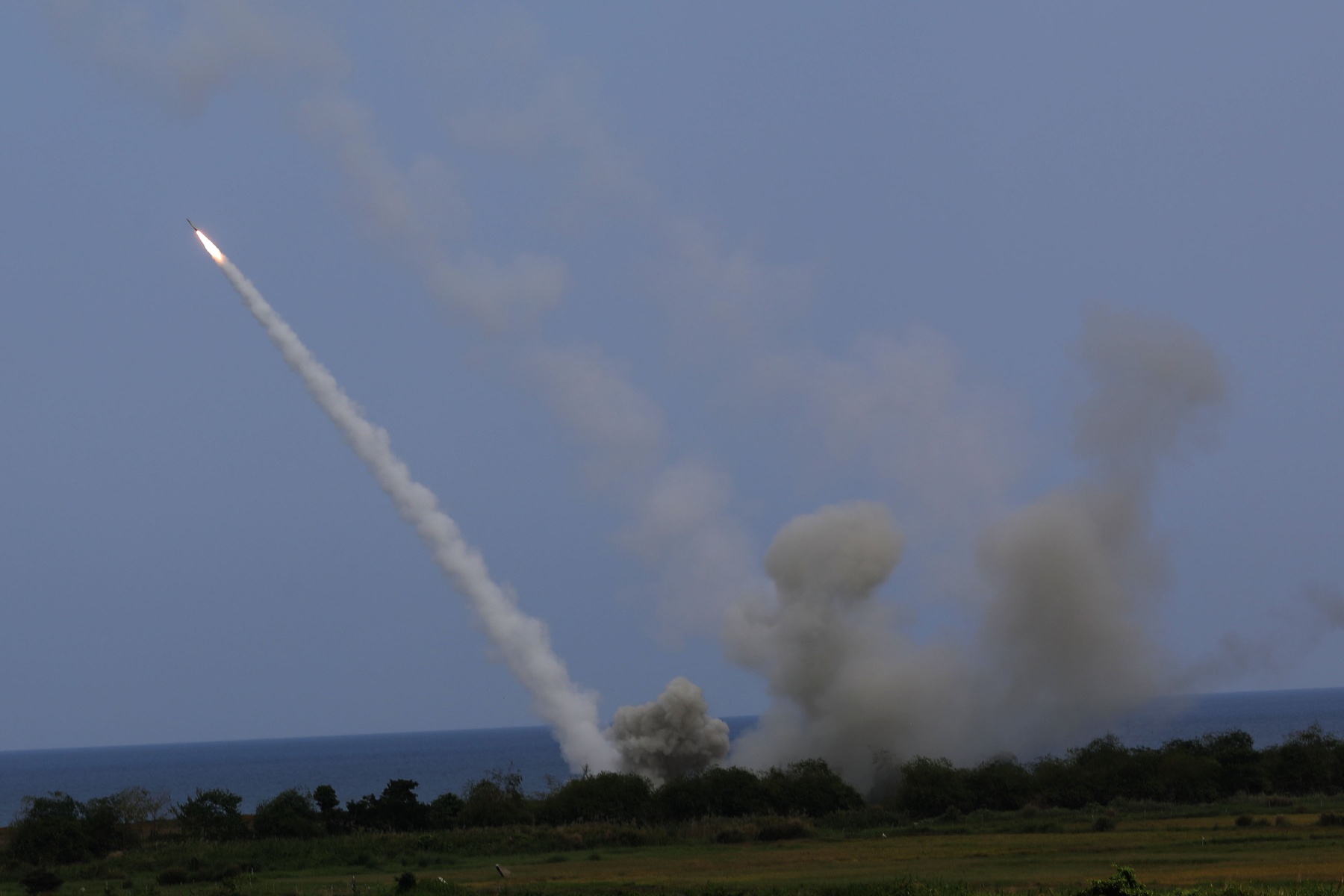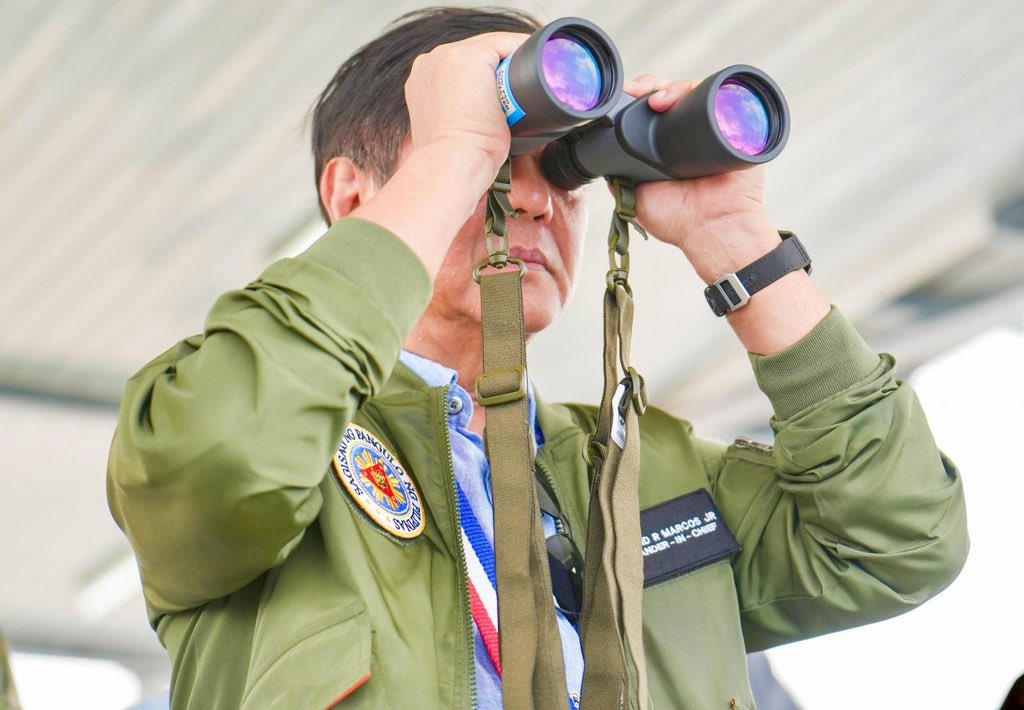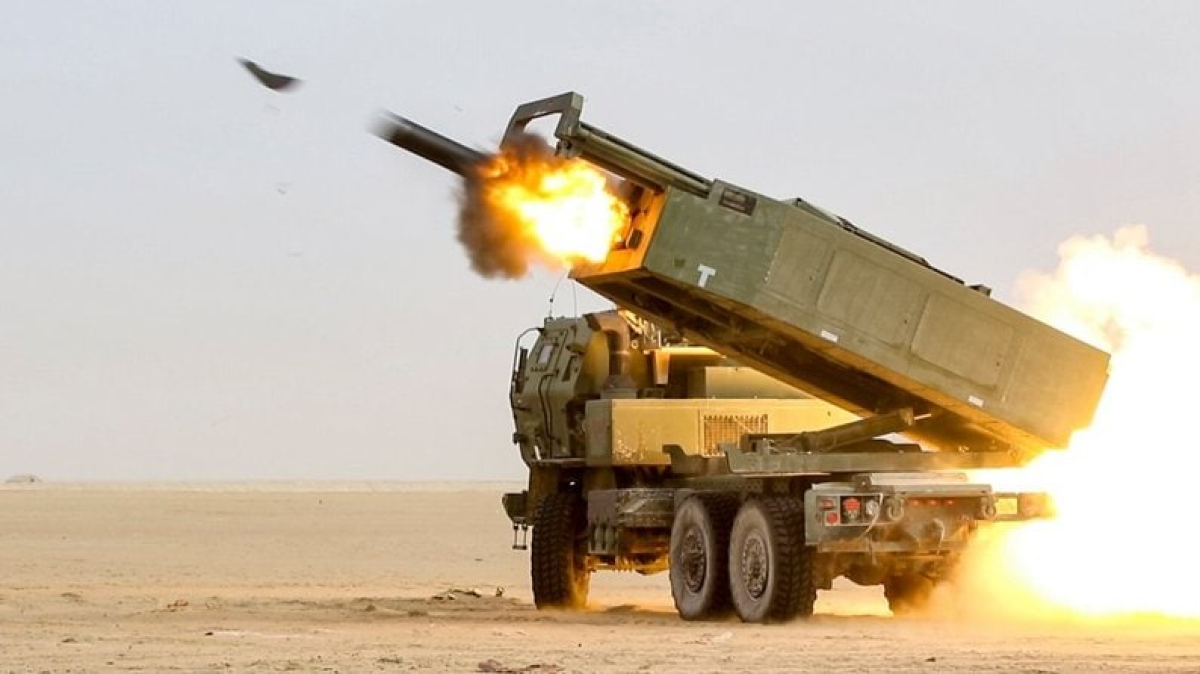One of the US Army’s most popular weapons, the HIMARS multiple launch rocket system (MLRS), missed its target during a live-fire exercise in the South China Sea on April 26.
Russian Fighter Pilots Engage In ‘Terrifying Maneuvers’ With US Military Aircraft; Experts Warn Of “Escalation”
The live-fire exercise was part of this year’s edition of the annual US-Philippines’ Balikatan’ military exercises, and the Philippine President Ferdinand Marcos Jr. observed from a tower with US Ambassador to the Philippines MaryKay Carlson seated beside him as the much-touted High Mobility Artillery Rocket System or HIMARS missed its target, which was a decommissioned warship.
The two HIMARS launchers fired six times at the former Philippine navy corvette, BRP Pangasinan, and missed each time; however, a barrage of ordnance from the US and Philippine artillery and aircraft finally sank the vessel.
The Balikatan exercise, the largest even in terms of troop numbers with more than 17,000 US and Filipino troops, is said to demonstrate further evidence of a decided shift of the Philippines, under the leadership of Marcos, toward its longtime ally, the United States.
Whereas, under former Philippine President Rodrigo Duterte, Manila seemed to be inching closer toward Beijing, despite the Philippines being among the several countries with a territorial dispute with China in the South China Sea and China continuing to assert control over maritime territory claimed by the Philippines.
The location of the target vessel was monitored by Hermes 900 drone and other redundant sensors, which transmitted the information to a combined intelligence fusion effects center (CIFEC) at Camp Aquino in Tarlac, which in turn, handed orders to the firing units.
Meanwhile, a narrator over a public address system described the action down range, as the vessel was invisible over the horizon.
HIMARS’ Failure To Hit Its Target
To simulate a real-world scenario in which troops have to sink an adversary ship, the first HIMARS rocket was targeted at the center mast of the vessel to take out its communication system, while the rest of the five rounds were intended to sink it.
However, the first shot missed the target because the vessel was drifting and “was not in the correct location,” as announced by US military personnel. The first shot missed the target vessel by approximately six to nine meters, while the five other shots hit different points.

A second set of HIMARS rockets were then prepared for firing while the CIFEC calculated the new position of BRP Pangasinan; however, an aerial intruder was detected by the US and Philippine military radars, which delayed the exercise by a few minutes.
“The range is cold because of safety issues, because of an aerial interloper that was reported to have entered the opera box [operational box]. We are waiting for the range to clear. The interloper was a private unregistered single craft aircraft in the middle of the ocean,” a US military personnel announced.
Once the intruder was escorted out of the operational area, the second set of HIMARS rockets were fired, and the exercise continued.
“Shore-based fire against a ship is exceptionally hard,” Lt. Col. Nick Mannweiler, a spokesman for Marine Corps Forces Pacific, said during the drill at Naval Station Leovigildo Gantioqui.

According to Mannweiler, the failure of the HIMARS to hit a vessel at sea was not a big deal. He said that the training tested the ability of the troops to sense a ship and pass on the targeting information to weapons operated by the US and the Philippines.
The training “sets the condition for more fruitful work like this in the future,” Mannweiler said.
The HIMARS launchers belong to the 3rd Field Artillery Regiment, based at Joint Base Lewis-McChord, Wash, and Marcos inspected one of the launchers before the live-fire exercise. That launcher, called ‘Wild Bill,’ is part of Outlaw Platoon, said Alpha Battery commander Capt. Cody Dobiyanski, who showed Marcos around.
After the HIMARS was fired, artillerymen from the 25th Infantry Division and their Philippine counterparts fired 105-millimeter and 155-millimeter rounds at the boat from their howitzers. The spokesperson for the 25th Infantry Division, Maj, said those rounds were on target. Jeff Tolbert.

Finally, the US and Philippine warplanes took turns attacking the vessel with guns and bombs. A US Air Force (USAF) MQ-9 Reaper drone flew overhead the vessel, providing images of the target to commanders calling in the strikes.
The final blow was delivered by a Marine Corps (USMC) F-35B Lighting II stealth fighter, and the vessel is said to have sunk at around 2:50 p.m.
Philippine Army Col. Mike Logico, director of the Joint Command Training Center, told reporters that Marcos understands the challenges of a large-scale bilateral exercise.
HIMARS x 6 from Philippines today at #Balikatan pic.twitter.com/JsYqzgyYmz
— Seth Robson (@sethrobson1) April 26, 2023
“What we demonstrated was the capabilities of the HIMARS and probably also its limitations,” he said.
In actual combat, the US forces would probably employ torpedoes or Harpoon missiles against a warship, Mannweiler said.
HIMARS Not Effective Against Mobile Targets?
The failure of the HIMARS system in a live-fire exercise is certainly newsworthy, particularly because of the fame it has risen to due to its involvement in the Ukraine war. However, this cannot be considered a reflection of the overall efficacy of the HIMARS MLRS system.
HIMARS have been credited with turning the tide of the ongoing war in favor of the Ukrainian armed forces, as they enabled them to destroy Russian positions far from the frontlines by leveraging the long-range HIMARS rockets.
The HIMARS MLRS provided Ukraine with a rapid precision strike capability at standoff ranges without needing air power, thereby allowing the Ukrainian military to compensate for the small size of its air force.

In fact, the effectiveness of HIMARS on the Ukrainian battlefield has been acknowledged publicly by pro-Kremlin figures, as previously reported by the EurAsian Times.
For example, in July last year, a former commander of Russian separatist forces in eastern Ukraine, Igor Girkin, said that “the Russian air defense systems, which relatively (very relatively) coped with attacks with the help of “Tochek-U” and “Uraganov” – turned out to be ineffective against massive strikes by Hymers (HIMARS) missiles.”
There has also been some appreciation of the precision of HIMARS rockets from Russian eyewitness accounts, such as Roman Saponkov, a Russian military blogger, embedded with frontline Russian forces who were present during a HIMARS strike on Chernobaevka, Kherson, on July 9, 2022, which made quite an impression on him.
“As it happened yesterday, I watched the HIMARS strike on Chernobaevka, Kherson, almost before our eyes. I have been under fire many times, but I was struck that the package, 5 or 6 missiles, landed almost into a penny. Usually, MLRS fall over large areas and at maximum distance scatter in a fan-like manner,” Saponkov said in a Telegram post.
Notably, the HIMARS MLRS was instrumental for the Ukrainian forces during their counteroffensive in Kherson, as it enabled them to consistently pound the Russian supply bridges across the Dnipro River until they were rendered unusable.
Ukrainian army hits the Antonovsky bridge in #Kherson not stopping the attempts to destroy this channel of supplies of russian military and weapons pic.twitter.com/lThaeTg4Ee
— Iuliia Mendel (@IuliiaMendel) September 5, 2022
Ultimately, the Russian forces were forced to withdraw from the western bank of the Dnipro River to the eastern bank, as they could not be supplied or reinforced without these bridges.
That said, it is also important to note that the target vessel was drifting during the recent live-fire exercise in the South China Sea, and the HIMARS system, as experts have previously told EurAsian Times, is more suitable against stationary targets rather than mobile targets.
This could perhaps help explain why the HIMARS failed to hit the target boat, notwithstanding its stellar performance in Ukraine.
- Contact the author at tanmaykadam700@gmail.com
- Follow EurAsian Times on Google News




